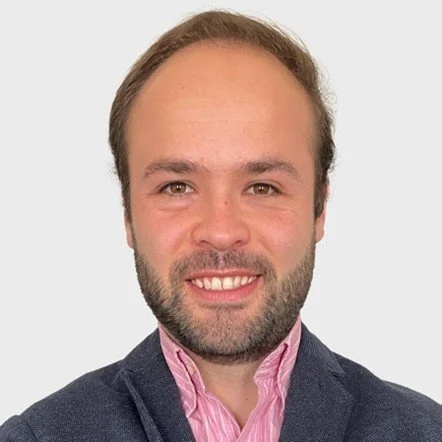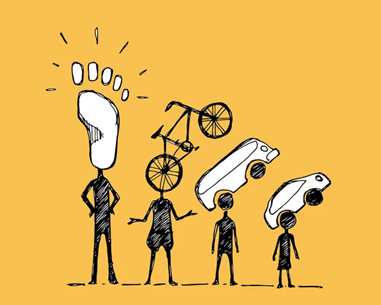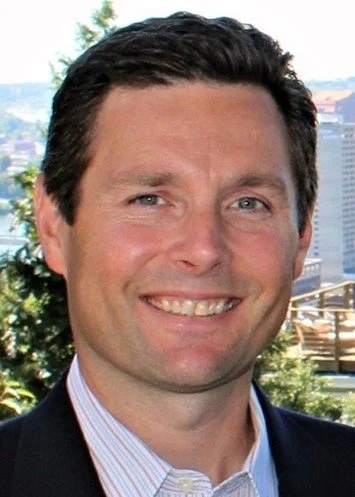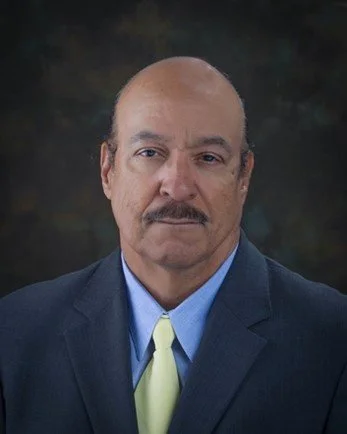When the MLK Interchange opened in 2017, the vision for Uptown Cincinnati as a district that will incubate talent and attract businesses officially began. Fast forward five years and the four quadrants at MLK and Reading Road in The Cincinnati Innovation District® (CID), a mixed-use development supporting Uptown’s medical, research and innovation industries, is quickly coming to life as construction finishes on the highly-anticipated University of Cincinnati Digital Futures building, the centerpiece of the Digital Futures Complex. Over the next decade, there are plans for an additional two million square feet of mixed-use development with 7,500+ people working, visiting, and living there each day.
Long before MLK was underway, transportation connectivity and access have been key focus areas for the Uptown Consortium, Inc. (UCI). The work has taken on new urgency at MLK and Reading Road as the first buildings are nearing completion and people begin moving in.
According to Beth Robinson, UCI’s President and CEO, a connected district is a priority as the Uptown Cincinnati region continues to grow. “Today’s workforce seeks multi-modal connections to where they work, live, and recreate,” she said. “A well-connected district is critically important to creating a walkable and appealing environment where companies and their employees will want to be.”
UCI has been working to develop mobility solutions for MLK and Reading Road in The CID, to meet the needs of all users whether they walk, bike, drive or use public transit. UCI spoke with partner stakeholders and experts---those who understand the need and are working on addressing some of the challenges---for their perspectives on the future of mobility; why mobility and access are important; and mobility concerns and challenges.
The stakeholders and experts include:
Alejandro Lozano Robledo, Research Associate at Digital Futures, Director of Future Mobility Design (FMD) Lab, Strategic Initiatives & Signature Programs, University of Cincinnati Office of Research
Rick Record, transportation consultant
Tom Rowe, Principal, Terrex Development & Construction
David Foxx and Ed Rigaud, Managing Partners, Queen City Hills
Following is what UCI’s partners have to say about mobility.
What is the future of mobility?
Alejandro Lozano Robledo (University of Cincinnati)
As the director of the Future Mobility Design (FMD) Lab and lead faculty of Future Mobility Design at UC, Alejandro Lozano Robledo focuses on collaborating with key industry and academic partners who share a passion for the future; to co-create innovative proposals that address real-world opportunities and improve the quality of life through mobility. Following is his response on the future of mobility.
Our cities and transportation infrastructure are at the brink of the largest disruption we’ve faced since the invention of the automobile. Emerging trends and technologies such as Autonomous Vehicles, Internet of Things, Hyper-connectivity, on-demand mobility, multi-modal mobility, shared economy, and artificial intelligence, are increasing the complexities of our cities but are also enabling a connected future with opportunities and experiences that were indistinguishable from sci-fi a few years ago.
As researchers, innovators, designers, and futurists, we must approach the new paradigm in a holistic and multi-disciplinary way. We must use this force of change in an ethical and empathic manner, to ensure a sustainable future for all. One of the largest changes of mindset is shifting our infrastructure from vehicle centric to people centric. This means designing our cities around walkability, transit-oriented development, and improving the quality of life through mobility.
The University of Cincinnati focuses on researching what will be possible 10, 20, and even 30 years into the future, using cutting edge technologies such as VR and conceptualizing solutions in terms of mobility, people, and cities, that inspire us to dream of all the possibilities. Imagine a future where you're able to meditate in a Buddhist temple high up in the Himalayas while going to work in the morning, or provide an immersive experience of the Grand Canyon to school kids while commuting to school, or conducting meetings, classes, learning to play an instrument, exercising, etc. while going from A to B. The possibilities are endless.
What are the concerns you’ve uncovered? What are the solutions? How can we work together to ensure the concerns are addressed and solutions are implemented?
Rick Record (transportation consultant)
The four quadrants at MLK and Reading Road have no shortage of concerns and challenges. We have lots of travel movement, speed issues, pressures from development and change, neighborhood needs, transit accommodations, and important aspects of capacity, connection and safety for "other" roadway corridor users: pedestrians, bikes, and all others not in a car. Solutions will have to be creative and consider operational as well as physical betterments. Whatever comes forward in the way of solutions will have to work for neighborhoods and stakeholders and will need to make a positive statement for the environment, both in terms of aesthetics and urban design, and functional performance. UCI is working hard at getting stakeholders, neighborhoods and city departments involved in considering information and solutions, a critical need for success in making sure concerns are addressed and workable solutions become reality.
Why is mobility and access important to your project?
Tom Rowe (Terrex Development & Construction)
The corner of MLK and Reading Road is the epicenter of The Cincinnati Innovation District and home to Digital Futures, our development at the southeast corner of the intersection. This is a bustling intersection as Reading Road is a major thoroughfare from downtown Cincinnati to Avondale and beyond and MLK is the primary connector from I-71 to Uptown and four of the city’s biggest employers. In short, there is a tremendous amount of vehicular traffic traversing this intersection.
While vehicular traffic is critical to the overall functioning of the Uptown neighborhoods, it is also an impediment to pedestrian traffic in the area. The idea behind the CID and Digital Futures is innovation and a major contributor to innovation is interaction. To allow for more interaction among the companies, organizations and their people we need to consider and allow for pedestrian traffic to also move efficiently through the corridor. Presently, being a pedestrian in the CID can feel intimidating and difficult because of the size of the major roadways, the amount of vehicular traffic on them and the speed at which the vehicles travel. Pedestrians need to be able to cross these roadways without feeling encumbered or threatened. One way to address this challenge would be to install bridges over the roadways such to separate the vehicular and pedestrian traffic and allow both to travel unencumbered. Whether bridges or otherwise, this challenge needs to be solved for the long-term success and vision of the CID can be fully realized.
Ed Rigaud and Dave Foxx (Queen City Hills)
Uptown is home to some of the region’s largest employers. Collaboration is a key to innovation within these companies and institutions, so it’s vital to provide amenities which encourage bicycle and pedestrian commuting to informal meetings. We want to make it convenient to park a bike at our life sciences campus and meet a colleague for coffee or hop on a bike for a quick ride to a meeting down the hill. Safe, protected bike paths are investments that pay back many times over in our community's health and innovative potential.
According to Robinson, the end goal is a fully connected region that caters to the needs and mobility of the current residents and visitors. It’s also one with an eye on positioning for next-generation transportation technologies and innovative solutions.
“It really comes down to working with stakeholders, community members, planning partners and project developers and adjusting plans to provide access for multi-modal transportation options.”






